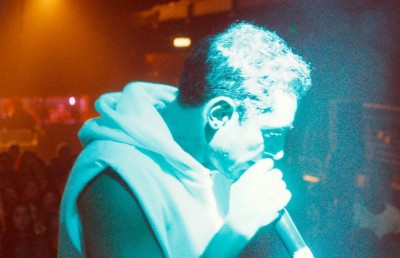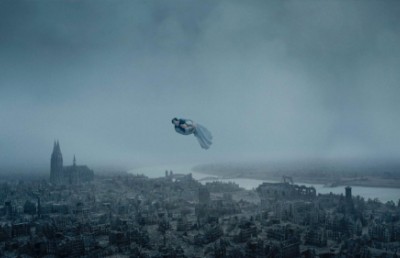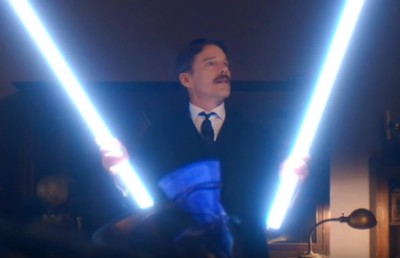The contemporary cinemas of the resistant form
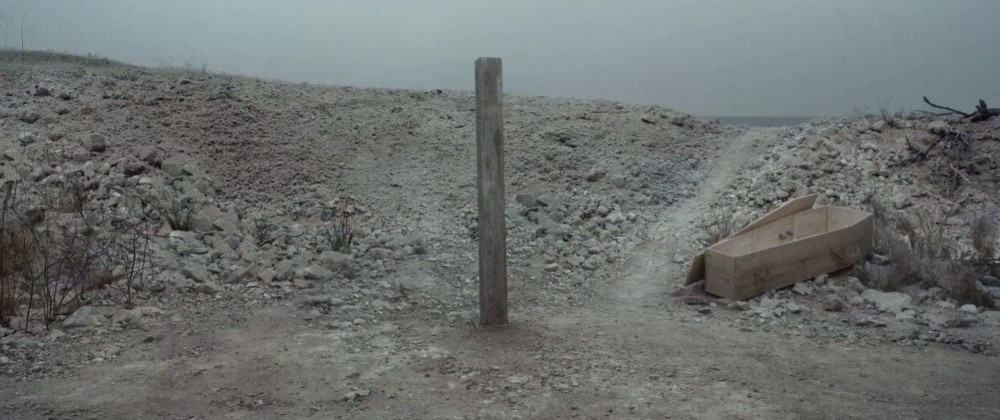
“Blessed be he who sits”
Songs from the Second Floor (Roy Andersson, 2000)
“Don’t move,” the director says. The couple rigidly poses for the on-screen camera as the camera behind it slowly lets us into the static world of Lech Majewski’s The Roe’s Room (1997). In another opening scene, that of The Turin Horse (Bela Tarr, 2011), Jano drifts for what seems like eternity on top of a cart carried by his famished horse. “We should feel for a long time that he [Jano] is moving forward”, Bela Tarr explains to one of his producers behind the camera. As Jano drifts, the couple in the Roe’s room sit deadly still, equally curbed by the weight of time.
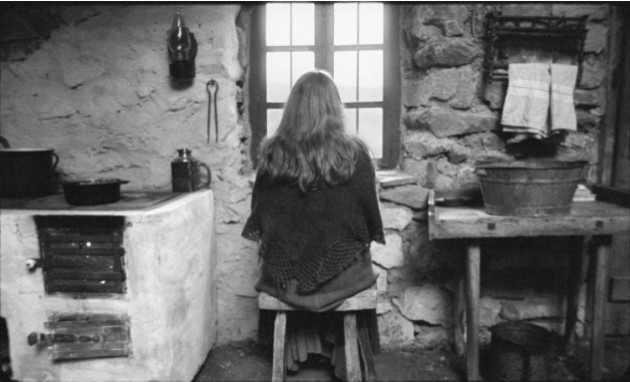
The Turin Horse
These two pejoratives of forced mobility and forced immobility mark at least one distinction between the cinema of the slow and the cinema of the tableaux. One is a cinema of walking, another of sitting still. Tarr belongs to the former, Majewski to the latter. But it would be a mistake to see the two dicta – “Don’t move”, and “Keep moving” – as altogether apart. Certainly, they both probe one end of the spectrum of what Jacques Ranciére has denoted the “persistent tension between… the politics of the becoming-life of art and the politics of the resistant form.” According to Ranciére, in his Aesthetics and its Discontents (2009), “the first identifies the forms of aesthetic experience with the forms of another life. The finality it ascribes to art is to construct new forms of life in common, and hence to eliminate itself as a separate reality. The second, by contrast, encloses the political promise of aesthetic experience in art’s very separation, in the resistance of its form to every transformation into a form of life.” (Ranciére 44)
The cinemas that “Don’t move” or “Keep moving” are the contemporary cinemas of the resistant form. When Jano drifts in The Turin Horse, he walks towards nothing but his death, yet he keeps moving. In Majewski’s tableaus, stillness reigns, but the immobility of actual life invites mobility in the realm of imagination. Seen in this way, the two dicta, and the two cinematic forms resulting from them, reflect two different ways of coping with – and resisting – emasculation and powerlessness. What they reject is the politics of the becoming-life of art.
The tableau as a technique is hardly new, but has always figured prominently in the toolbox of filmmakers. Think only of the films of Shuji Terayama, Sergei Parajanov, Agnes Varda, or Peter Greenaway. Or think of the forms of the early cinema, what Tom Gunning has called The Cinema of Attractions (Gunning, 1986). Indeed, one could argue that the tableau represents one end of one spectrum of the primitive urges of the artist, one of which is the narrative impulse, the other the impulse to compress meaning into a timeless constellation. Observe the camera as it sweeps across a scene, goes to a height, retreats behind a tree, and lingers on its tableau, as in Sergei Parajanov’s Ashik Kerib (1988). To turn a scene into a tableau is to tie a knot on its expression, to fold the gesture upon itself. Thus, the tableau aesthetic emerges in every deliberate camera staging, every detailed attention to an object, every attractive glance, every spectacle of a scene, or in the oft used freeze-frame technique in which an element suddenly draws attention to itself as image.
Across contemporary filmmakers as diverse as Lech Majewski, Radu Jude, György Pálfi, Sarunas Bartas, Roy Andersson, Ihor Podolchak, and Szabolcs Hajdu, we find various shades of the idea of becoming image entertained. But there’s a reason to reject that to observe a move in contemporary world cinema towards immobility should be cast as a simple embracement of, as André Bazin would put it, cinema’s mummy complex. Further, the contemporary use of the tableau is not a progression of making images come alive, as in the case of early cinema, but of making life become image. Similarly, while slowness has figured prominently in the cinema of, say, Antonioni, Tarkovsky or Akerman, I would hesitate to cast slow films of the 21st century from directors such as Lav Diaz, Bela Tarr, or Lisandro Alonso, as a continuation or radicalization of the languid style of such directors. Rather, there is reason to see it as an outgrowth of a whole other paradigm of cinema. More precisely, the genealogy of 21st century slowness and immobility might be better conceived in relation to cinema’s politics of resistance of earlier decades, i.e. the 60’s. This was a cinema of the becoming-life of art, and as such radically opposed to the resistant form. Glauber Rocha’s Brazilian Entranced Earth (1967) ends with bullets blazing into the sky from a firearm. The African film Emitai (Ousmane Sembéne, 1971) ends with a long black screen with the sound of bullets fired from resistance fighters. The Bolivian Blood of the Condor (Jorge Sanjinés, 1969) ends, similarly, with firearms from anti-imperialist revolutionaries raised towards the sky. But much has happened since then. In our new environment, filmmakers of the oppressed gladly engage in resistance while simultaneously disposing with any thoughts of activism. It is in this light that I believe the contemporary cinemas of the resistant form, ranging from the slow to the immobile, must be cast.
The persistent urge of the political cinema of the 60’s to stress the necessity of violence through cinema was perhaps most clearly and radically expressed in Glauber Rocha’s infamous manifesto An Aesthetics of Hunger (Rocha, 1965). In his short, trailblazing essay, Rocha claims that “in moral terms, this violence [in film and in life] is not filled with hatred; nor is it linked to the old, colonizing humanism. The love that this violence encompasses is as brutal as the violence itself, because it is not the kind of love which derives from complacency or contemplation, but rather a love of action and transformation” (Martin 59). In recent film history, mainly after the advent of the new millennium, however, cinema-goers have witnessed the emergence of a political film that, to quote Darlene Sadlier, “silences the anger.” We count filmmakers such as Pedro Costa, Lav Diaz, Tsai Ming-liang, Bela Tarr, and Lisandro Alonso as part of this new regime of art, as well as filmmakers such as Lech Majewski, Radu Jude, Šarūnas Bartas, Roy Andersson, Ihor Podolchak, and Szabolcs Hajdu, the latter batch being more inclined towards the tableau aesthetic. While it is easy to find common ideological ground across these films, such as opting to channel political critique through the resilience of individuals rather than the resistance in and of societies, it is rather more difficult to explain why contemporary cinema politics has chosen so incessantly to inscribe an aesthetics of what has been lost whilst hardly showcasing any want to reclaim it. One aspect, certainly, can be glimpsed from a quote by Patricia Pisters: “with the first films of the so-called Third Cinema movements that emerged after World War II, in all the colonized parts of the world undergoing a struggle for decolonization, there was ‘a people’ that could be addressed” (Pisters 157). In contrast, “in spite of all the local differences in world cinema, modern political filmmakers have in common that they show how ‘the people are missing’” (Ibid.). Where there were arms, there is now a multinational vision of local destinies suffering under the invisible global umbrella and under a history and nation out of reach.
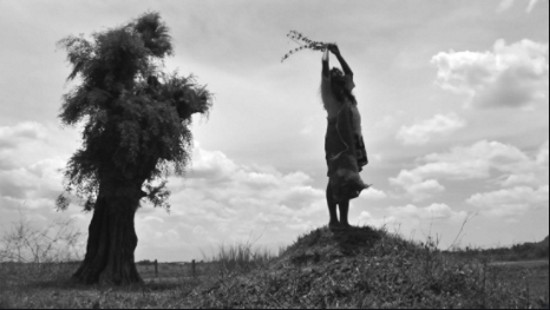
La Libertad
Think of the isolated woodcutter in Lisandro Alonso’s La Libertad (2001). It is unclear who is responsible for his situation. What is clear is that he is alone. There is no “people.” The collective is outside the frame. What remains inside the frame is a feeling of a global conspiracy towards the local, and, in the words of Frederic Jameson, “the conspiracy wins… not because it has some special form of ‘power’ that the victims lack, but simply because it is collective and the victims, taken one by one in their isolation, are not” (Jameson 66). In La Libertad, or The Turin Horse, people work, but they work alone, demonstratively rather than busily. In some films, such as the works of Lav Diaz, we get to observe a collective in the form of a small town of interconnected destinies, but, repressed by history and forgotten by the authorities of the day, the collective slowly disintegrates. In other films, work has entirely stopped, leisure takes hold, and the local starts conspiring against itself. As such, while Argentinian Lucrecia Martel’s La Cienaga (2001), consisting of a string of nihil non-happenings in a petit-bourgeoisie mini-castle in a hot, wet and numbing summer, is a perfect example of the employment of apathic individualism, the responsibility for the characters’ misery is not so easily placed. Their own apathy seems to be part of the conspiracy. Martel herself supports this notion by saying that “what one feels is that the topic has lost its explicit, timely political charge and that what remains is the human, dramatic charge, the historical weight of all that happened, the guilt, the lack of atonement… All of that has a strong presence in what is happening today” (Podalsky 111). This comment by Martel supports Ranciére’s analysis of contemporary art as being steeped in a “reversal of the flow of time: the time turned towards an end to be accomplished – progress, emancipation, or the other – is replaced by that turned towards the catastrophe behind us. But it is also a levelling out of the very forms of that catastrophe” (Ranciére 119). Through the reversal of time, all catastrophe collapse into one and makes action either an act of demonstrative resilience – the dictum to keep moving as found in modern slow cinema – or something located in the realm of imagination only after complete immobility in actual life has ensued, as in the tableau film. For the new millennial aestheticians of the oppressed, the film’s very resistance to resolve itself in anything but itself becomes its foremost weapon.
However, while the tableau aesthetic accompanies slow cinema in its rejection of the politics of the becoming-life of art, the tableau also boasts its own distinct marks of resistance. What distinguishes it, is its focus on whatever kind of freedom emerges from immobility. Thomas Elsaesser has noted that abjection “figures as the freedom to assert – and to inhabit – a position of extreme marginality and exclusion… As a consequence, the ethics of abjection derives from the fact that the abject has nothing more to lose, but also has no claims to make, thus commanding a particular kind of freedom that probes the limits of both freedom and the law” (Elsaesser 15). Slow cinema did not really probe this freedom, but the tableau gains weight exactly from this posture. In the tableau, one cannot move one’s body, but one can certainly move freely through the realms of imagination.
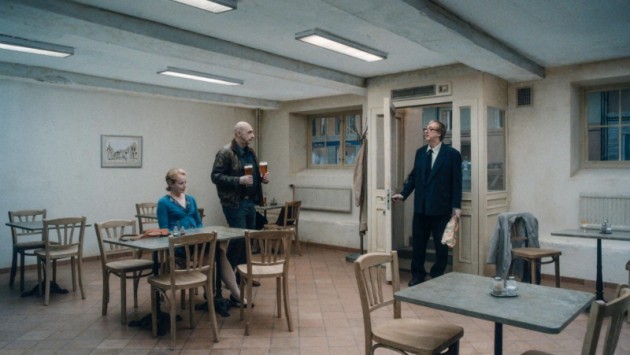
About Endlessness
In the slow cinema of Pedro Costa, Lav Diaz, and Lisandro Alonso, the characters can move in space, and the camera can follow if it wishes, tracking sideways in space, from left to right, or moving forward with the characters, as in Tarr’s cinema. In the tableau, we can still witness all these gestures, but we can witness something else in addition: to track into the image, into a static composition, as if moving into the layers of a painting. One notable scene occurs in Greenaway’s Drowning by Numbers (1988), in which the camera slowly glides into the layers of static, positioned people. The oeuvre of Lech Majewski, the most demonstrable of all practitioners of the tableau vivant, is a veritable tour de force of this technique at play. This is where the actual vivant comes in: not to make the dead move, but to move around death and explore it playfully. Once one is image, one can become ornament – maybe even for the upper classes, or for the camera. The urge to become image, and its relation to globalization, is perhaps most clearly explicated in Gyorgy Palfi’s Taxidermia (2006). In this film, three generations are portrayed as interlinked in a cyclical way. The first and second parts focus on an excess of bodily desire, from sexual transgression to over-eating and obesity. The third part, set in modern society, shifts the focus from the body as an organic container to the body as surface and image, starved and 2D-like. After his father literally explodes from obesity, the main character, a skinny taxidermist, turns himself and his father into objects, later to be exhibited at an art-gallery as ornament for the upper classes. The imagery of abundance and starvation, of the son sustaining the desire of his obese father, and later embalming this very image, is almost too clear: in a history where the escape from communism ended not in freedom, but in a wicked mix of globalism, individualism and exploitation, the best shot at recognition and freedom is to become image and to preserve the distance between the obese and the starved. As spoken in the film: “Of course, different things are important for different people. For some, it is space; for others, time.” If one cannot extend oneself in space, one can at least extend oneself in time – but not without a loss. As it is said in the film: “There are things that cannot be mounted.” The oppressed subjects of slow cinema extended themselves in space. The oppressed subjects of the tableau extend themselves in time. In another film, Radu Jude’s Scarred Hearts (2016), the obsession with immobility becomes quite literal as it depicts a hospital of immobile patients discussing history and ideas without ever being able to act. They too, become image. In a somewhat eerily precise description of the logic behind the contemporary tableau aesthetic, we hear that: “some has to do great things to get a statue; you just have to be a little ill.” And if a human being can become tableau, then a film can too. Indeed, at the end of Szabolcs Hajdu’s Bibliotheque Pascal (2010), the film itself becomes display as we track around a furniture store where paper humans and actual people co-exist, signalling the complete lack of distinction between furniture and actual life. Before then, we have followed a woman who out of fear of losing her child custody becomes a prostitute for the Bibliotheque Pascal, an art-house brothel in which customers engages in intimate acts with characters from history. Here, the link between the tableau as both a signal of freedom and as the ultimate resistant form becomes clear. The prostitute becomes objectified, but gains a certain kind of freedom from being able to choose customers freely from the plate of world history. Where one cannot move in actual space, one can always move in the virtual. This exact logic seems to be the foundation of the structure of Lars von Trier’s Nymphomaniac (2016). Here, prostitution is, as in most all films in which an obsession with the tableau appears, linked to history. The nymphomaniac herself lies still in bed, unable to move, but her memory flows freely. In another of Trier’s works, The House that Jack Built (2018), we see, on the other hand, a man who acts but who acts out of a strong desire to make unity of his actions, conceived of as trophies with which to build a house out of his life’s material. The trophies, of course, are dead bodies, compressed and folded from a narrative progression into a timeless constellation. As Trier is well aware, one can only build with dead parts.
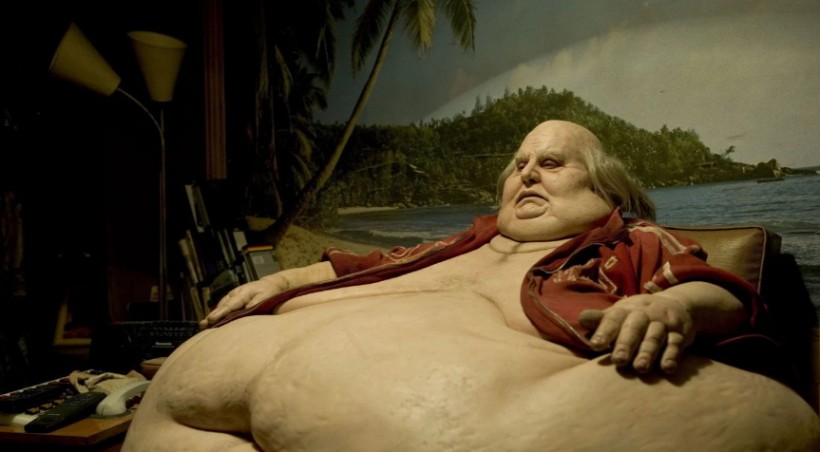
Taxidermia
Thus, the tableau’s temporality is one where past, present, and future meld together. It is also one where people meld together, as showcased by the painted of faces of the character’s in Shuji Terayama and Andersson’s works. As should be clear from the examples above, the tableau houses an obsession with death, or playing dead (a favourite of Greenaway’s), nudity, and – as seen in the works of Rául Ruiz – games and combinatorics. In short, whereas slow cinema favours realism, the tableau builds up a space of dreams and ideals. One can only sit and wait for such a space to break down. In a memorable scene in Shuji Terayama’s Pastoral – To Die in the Country (1974), the tableau breaks down absurdly when the frame around the actors falls apart and they suddenly find themselves located in city traffic. That we see a much larger use of humour, often of the black kind, in the works of the tableaux, than one does in slow cinema, is not incidental. The laugh is one of despair as the tableau subject realises the dialectic between total freedom in the imagination and complete emasculation in real life. A filmmaker particularly adept at probing the humor found in the duality of forced mobility and forced immobility, is Roy Andersson. Andersson’s beings do not refuse to move through spaces of misery, nor do they walk towards the apocalypse demonstrably. Rather, the weight of moving one’s own body, and the weight of one’s body resting on the ground, complement each other from scene to scene. In the film that inaugurated his tableau style, Songs from the Second Floor (Andersson, 2000), we hear the recurrent line “blessed be he who sits.” In his latest film, About Endlessness (Andersson, 2019), the line has changed slightly. “I saw a man,” a woman repeatedly declares. But that Andersson’s work is not just about sitting still, nor simply about seeing, becomes gradually clearer. It’s also about forced mobility. In one scene, a man carries a cross on his shoulder uphill while being whipped by the statuary masses. Here, movement and stillness combine as the last, opposite remnants of futile resistance. The two dicta “Don’t move” and “Keep moving” have merged, and the result is humor of the blackest kind. In one scene, we even get to see a couple flying in the sky, united. While slow cinema refuses to leave this earth, the tableau has left its body on ground – static – but as a result moves freely in another realm. The lesson seems to be that in a world in which blessings come from sitting still, every movement is comic and flawed. In the cinema of the slow, where every blessing comes from continued movement, every movement is one of dignity.
There are thus many rather large differences between what I broadly term slow cinema and tableau cinema, or more precisely term the cinema of the “Keep moving” dictum and the cinema of the “Don’t move” dictum. But where I do believe they quite firmly unite is in their despair and focus on emasculated individuals. By rejecting the politics of the becoming-life of art, they run a risk.
Years ago, I went to a screening of Lisandro Alonso’s La Libertad (2001) at the Cinematheque in Copenhagen. At the Q&A, Alonso told a story. At a previous screening, an audience member went up to him and told him that “now he finally knew what freedom was like.” Alonso responded, “that’s fine, go up and have a beer.” And off the man went. Alonso, however, told us audience members that he explicitly wanted to say the opposite with his film. That indeed this man in La Libertad, a woodcutter living in isolation and poverty, was not free. Lisandro Alonso, at the very start of the new millennium, showed that which was not included in the new structure of globalization – an isolated man living in poverty, outside of reality, outside of society. But the cinematic apathy and laconic beauty with which Alonso rendered his subject failed to excite from this image of the excluded, at least in this particular viewer, the dialectic between this image and its non-place in the societal discourse and economic structure. How could you blame the audience member? In the unremitting, rhythmic swinging of the axe towards the tree, there was also a beauty.
In parallel, by leaving a dead, inactive body on earth to engage in freedom only in the afterlife, the tableau runs a risk of misunderstanding as well. If one is to perceive these films as coherently political at all it must be in their rejection of a third kind of cinema, the becoming-life of art, in the sense that such an artform is no longer possible. Understanding why this is so, is then the primary task.
Bibliography
Jacques Ranciére (2009). Aesthetics and its Discontents. Polity.
Frederic Jameson (1995). The Geopolitical Aesthetic: Cinema and Space in the World System. Indiana University Press.
Glauber Rocha (1965). “An Aesthetics of Hunger” in New Latin American Cinema (Martin, 1997, pp. 59-61)
Tom Gunning (1986). “The Cinemas of Attractions”. Wide Angle 8.3, pp. 63-70.
Thomas Elsaesser (2018). European Cinema and Continental Philosophy: Film as Thought Experiment. Bloomsbury Academic.
Laura Podalsky (2011). The Politics of Affect and Emotion in Contemporary Latin American Cinema: Argentina, Brazil, Cuba, and Mexico. Palgrave MacMillan




